Test Bank for American Corrections Concepts and Controversies, 2nd edition, Barry A. Krisberg, Susan Marchionna, Christopher J. Hartney
$35.00
Test Bank for American Corrections Concepts and Controversies, 2nd edition, Barry A. Krisberg, Susan Marchionna, Christopher J. Hartney
Category: Test Bank
Test Bank for American Corrections Concepts and Controversies, 2nd edition, Barry A. Krisberg, Susan Marchionna, Christopher J. Hartney
Table Of Content
Preface
Acknowledgments
Part I: History and Sentencing
Chapter 1: The Corrections System
Learning Objectives
A Legacy of Crisis and Turmoil
Corrections as a System
Corrections and Society
A Critical View of the System
A Keen Eye Toward the Future
Summary
Discussion Questions
Key Terms
Notes
Digital Resources
Chapter 2: A Historical Perspective on Punishment and Social Structure
Learning Objectives
Discerning Historical Constructs
Penance and Fines
Social Change in the Later Middle Ages
The Discovery of Imprisonment
Galley Slavery, Transportation, and the Emergence of Imprisonment
The Industrial Revolution and Corrections
Zebulon Brockway and the Rise of the Adult Reformatory
Corrections and the Progressive Era (1880–1920)
After the Progressive Era (1920–1960)
The Era of Civil Rights and Community Corrections (1960–1970)
The Prisons Explode (1970–1980)
The Demise of Rehabilitation and the Get-Tough Era (1970–Present)
The Return of Enlightened Corrections Policy
Summary
Discussion Questions
Key Terms
Notes
Digital Resources
Chapter 3: The Purpose of Punishment and Sentencing Trends
Learning Objectives
How Sentencing Works
The Presentence Report
Sentencing Theories
Contemporary Movements in Sentencing Laws and Policies
Summary
Discussion Questions
Key Terms
Notes
Digital Resources
Part II: Correctional Practice
Chapter 4: Jails
Learning Objectives
The Functions of Jails
Who Is in Jail?
Facts About Jails
Jail Administration
Jail Procedures
In-Custody Programs
Alternatives to Incarceration
Summary
Discussion Questions
Key Terms
Notes
Digital Resources
Chapter 5: Probation and Alternatives to Incarceration
Learning Objectives
What Is Probation?
Who Is on Probation?
A Brief History of Probation
Two Key Perspectives on Probation
Probation Administration
The Role of Probation Officers
Sentencing and Investigation
Supervision
Violation, Revocation, and Termination
Does Probation Work? Probation Research
Alternatives to Incarceration
Evaluating Alternatives to Incarceration
Cost Savings
Summary
Discussion Questions
Key Terms
Notes
Digital Resources
Chapter 6: Prisons
Learning Objectives
The Means to an End
Design of Prisons
What the Numbers Say
Prison Costs
The Federal System
State Prisons
Military Prisons and the War on Terror
Security Levels
The Supermax
Programs and Services
The Prison Environment
Discipline
Summary
Discussion Questions
Key Terms
Notes
Digital Resources
Chapter 7: Coming Home: Reentry and Parole
Learning Objectives
Parole as a Form of Community Corrections
The Early History of Parole
Parole Basics
Parole Authorities
The Challenges of Reentry
Reentry Data
Perspectives on the Current Purpose and Practice of Parole
What Works in Parole
Evidence-Based Practice and Parole
Summary
Discussion Questions
Key Terms
Notes
Digital Resources
Chapter 8: Juvenile Corrections
Learning Objectives
A Brief History
The Past 30 Years: More Cycles of Scandal and Reform
The Structure of the Juvenile Justice System
Characteristics of Juveniles in Custody
Overrepresentation of Youth of Color
Young Women and Juvenile Corrections
Recidivism Rates and Juvenile Corrections
Juvenile Corrections Fads
Summary
Discussion Questions
Key Terms
Notes
Digital Resources
Chapter 9: The Corrections Workforce
Learning Objectives
Corrections Work
Service Providers and Treatment in Custody
Why Corrections Work?
Characteristics of the Corrections Workforce
Correctional Staffing
Education and Training
The Correctional Hierarchy
Sustaining a Workforce
Job Stress
Progressive Developments in Leadership
Summary
Discussion Questions
Key Terms
Notes
Digital Resources
Part III: Critical Issues and Policy Questions
Chapter 10: Holding Corrections Accountable
Learning Objectives
State Regulatory Bodies
Professional Standards
Litigating in the Courts to Stop Abusive Practices
Legislating Reforms
Summary
Discussion Questions
Key Terms
Notes
Digital Resources
Chapter 11: Corrections and the Color Line
Learning Objectives
Measuring the Extent of the Problem
Race and Ethnicity Behind the Walls
African American Disproportion in the Criminal Justice System
Asian Americans and Pacific Islanders and the Corrections System
Native Americans and the Corrections System
Latinos and the Corrections System
Immigration and Incarceration
Understanding the Causes of Racial Disparity in Corrections
Racial Profiling
Summary
Discussion Questions
Key Terms
Notes
Digital Resources
Chapter 12: Women in the Corrections System
Learning Objectives
The “Pink Syndrome”
The Rising Tide of Incarcerated Women—What the Numbers Say
Young Women and the System
Women’s Pathways Into Crime
A Complex Mix of Risk Factors
Coping With Incarceration
Programs and Services
Operational Issues in Custody
Conditions of Confinement
Research on Women and the Justice System
Moving Forward With Research on Women
Prospects for Gender-Responsive Programming
Summary
Discussion Questions
Key Terms
Notes
Digital Resources
Chapter 13: Challenging and Vulnerable Populations
Learning Objectives
Prisons and Jails as Community Health Providers
A Wide Range of Medical Problems
Health Care Services
Mental Illness in Prisons and Jails
The Increasing Elderly Prison Population
Lesbian, Gay, Bisexual, Transgender, and Questioning Inmates
Summary
Discussion Questions
Key Terms
Notes
Digital Resources
Chapter 14: Death Row and the Death Penalty
Learning Objectives
The Controversial Moral Imperative
The State of Capital Punishment
Characteristics of Death Row Inmates
Legal Challenges to the Death Penalty
Juveniles and the Death Penalty
The Death Sentence and Mental Competence
Innocence and Those Awaiting Executions
Costs of Capital Punishment
The Problem of Lethal Injection
Summary
Discussion Questions
Key Terms
Notes
Digital Resources
Part IV: The Effectiveness and Future of American Corrections
Chapter 15: The Privatization of Corrections
Learning Objectives
History and Functioning of Private Prisons
Major Private Prison Companies
How Private Prisons Function
Other Forms of Corrections Privatization
Private Prison Performance
Impact of Privatization on Local Economies
Privatization, Innovation, and Reform
The Profit Motive and Conflict of Interest
Contracting, Oversight, and Monitoring
Are Private Prisons Necessary?
Further Research
Summary
Discussion Questions
Key Terms
Notes
Digital Resources
Chapter 16: The Politics and Future of Mass Incarceration
Learning Objectives
Mass Incarceration and Electoral Politics
In Whose Interest?
An Opening to Change
What the Public Actually Thinks About Corrections Policy
Confronting the Politics of Mass Incarceration
Is Money the Currency of Reform?
Recruiting New Allies to Corrections Reform
Summary: The Way Forward
Discussion Questions
Key Terms
Notes
Digital Resources
Glossary
References
Index
About the Authors
Be the first to review “Test Bank for American Corrections Concepts and Controversies, 2nd edition, Barry A. Krisberg, Susan Marchionna, Christopher J. Hartney” Cancel reply
Related products
$55.00
$35.00
$35.00
$35.00

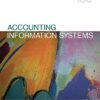

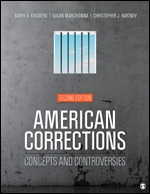


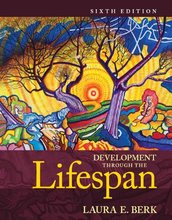

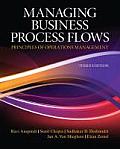
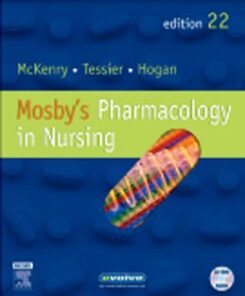

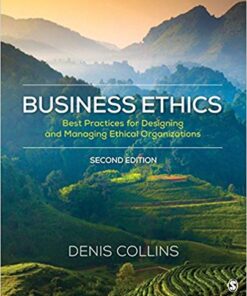
Reviews
There are no reviews yet.